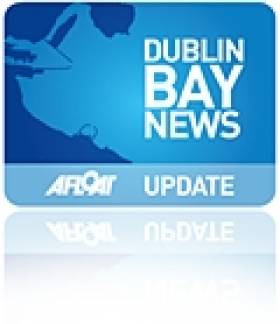Displaying items by tag: Lightship Kittiwake
Dublin 'Docklands' Developer Harry Crosbie Seeks Return of former Lightship ‘Kittiwake’
The Dublin 'docklands' developer, Harry Crosbie is launching a campaign for the return of the 134ft (floating) landmark, Kittiwake.
The former lightship which he (had berthed) alongside the Liffey and (opposite) of The Point Depot, now the O2, then one of his many docklands business ventures.
But the distinctive red ship, which was sold to him by its owners, the Commissioners of Irish Lights (CIL), for a reputed €60,000, is now in the possession of Dublin Port, which has docked it away from public view in Alexandra Basin within the port complex.
For more on this development of the former lightship, Independent.ie reports here.
As Afloat previously reported, it is almost a decade since Crosbie's plans to relocate the former lightship Kittiwake on the North Quay Wall, in front of the O2 Theatre, were refused permission.
The 1959 built lightship was converted in the 1980's by Irish Lights into an Automated Light-Float (ALF) and last served on station at South Rock off the Co. Down coast until 2005.
ALF Kittiwake was the second last lightship to operate in waters around Ireland.
Lightship To Lead A Rocky Life?
The Dublin 'Docklands' developer, Harry Crosbie is seeking permission from Dublin City Council to raise the 500-ton lightship, Kittiwake and place on the quayside opposite The 02 Theatre. Currently the lightship is berthed nearby the East-Link road toll bridge and acts as a notable floating feature to countless daily commuters.
In 2007, the Commissioners of Irish Lights (CIL) sold the 1959 built lightship to Crosbie. The 134-foot lightship had served in that role for many years around the Irish coast. In 1981, as part of an extensive modernisation programme, the Kittiwake and other lightships were converted into an automated light-float (ALF). The last station served by the ALF was at South Rock, Co. Down.
If the former lightship is given the green light, the vessel would act as a "welcoming point" for cruise tourists. Subject to planning permission, the lightship would undergo another re-conversion project to create an open-plan café bar for a period of five years.
The veteran vessel would also have its lighthouse light restored and would "beam" across the docklands and entertainment venue. The lightship would maintain its customary 'red' hull with Kittiwake written in neon on the side.
In order to attract this cruise business to the Kittiwake, Crosbie has asked the Dublin Port Company to relocate the main existing cruise-ship location closer to the O2 Theatre. The proposal has the support of Dublin City Council.
In the meantime the majority of cruise-ships dock at Alexandra Basin, in the heart of the port's industrial zone but the distance is quite far from there to the city centre.
On an annual the capital welcomes around 80,000 passengers during each season, generally between May to October. In 2011, the port expects 86 cruise-calls, potentially generating €35m to €55m to the economy.
The proposed for the new terminal is to be submitted to the EU this month, in the hope of financing support. Meanwhile the proposed site envisaged for the cruise terminal, is occupied by tugs based operated by Dublin Port Company.






























































